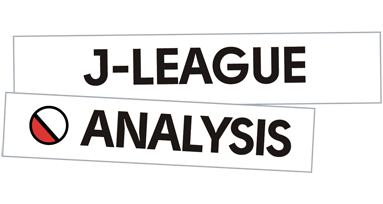After enjoying a stellar career at La Liga giants Barcelona, there were a number of clubs that Andrés Iniesta had been linked to. Chinese Super League side Chongqing Lifan was thought to be front runners at one stage but they failed to get his signature. Others were of the belief that the Spanish international would head to either the A-League in Australia, the Middle East, or the MLS. Then the announcement came in May 2018 that Iniesta will be joining J-League side, Vissel Kobe, on a contract that will keep him at the club for a “number of years”. Iniesta then came out and said his intention was to help the J-League grow in Asia and was excited to contribute to a team and culture with a different playing style and tactics. Following his first season in the J-League, he was then named captain in for the 2019 season, replacing former Arsenal striker Lukas Podolski.
With the 36-year-old having not lost his touch, this scout report will highlight Andrés Iniesta’s performance at Vissel Kobe. This analysis will also examine the role he plays within their system. This tactical analysis will also look at how the tactics Iniesta has used at Barcelona have emerged for his new side.
Role within the system
Throughout the 2020 season, Vissel Kobe have stuck with two main formations, the 3-4-3 and the 3-5-2. This allows their wing-backs to push higher to provide the width and it also enables Vissel Kobe to have a number of striker options when the midfielders are able to receive the ball and play forward. Out of the 18 appearances the Spanish playmaker has made in 2020, 17 of those matches had him start as a left central midfielder. Despite starting on the left side, Iniesta is still allowed the freedom to drift inside and position himself centrally or even on the right-hand side. This is shown by the heatmap below.
Although Barcelona predominately played in their classic 4-3-3 formation, Iniesta’s current role is not too dissimilar to what he was used to with the La Liga giants. From a football management perspective, this makes sense. Here you have a player with a stellar career for both Spain and Barcelona upholding the role of a playmaking midfielder. The last thing you want to be doing is restricting his influence across the pitch and moulding him to fit the system.
Additionally, since he is a right-footed player, the natural tendency for him receiving the ball on the left-hand side is to open up his body and move inside. Therefore, the types of crosses he makes usually swing from right to left in the air. This makes it difficult for defenders as all the momentum is travelling towards their own goal, so they are forced to get set earlier.
Iniesta’s influence off the ball
When Vissel Kobe build up in possession, Iniesta will position himself in between the lines of the opposition defence and midfield in as much space as he can find. Often you will see that when he is in those areas, he communicates to his teammates to position themselves around him early so that when he receives the ball, he can bounce and combine with his teammates. This is the anticipation that the La Masia product had developed through his time at Barcelona.
As a consequence of the 36-year-old’s positioning during the build-up phase, his movements off the ball allow him to create space for other teammates in wider areas. As seen in the picture below, Iniesta starts within the half-space.

Because of the threat that Iniesta possesses, defenders are drawn towards him thinking that the Spanish midfielder will receive the ball. In this scenario, the defenders are naturally drawn in tighter as the centre back is driving forward. This is so they can protect the middle and prevent Iniesta from receiving the ball.
As a result, the wing-backs have more space to receive the ball. When this scenario occurs, rather than being the midfielder who looks to break lines and receive beyond, Iniesta will maintain his position in front of the defensive line. If he receives the ball in that space, he can make a splitting pass to a teammate who makes the run behind.
The roaming playmaker
We all knew of Iniesta’s passing ability when he was at Barcelona. The question was whether the same style could be implemented in Japan. The data shows that the last two seasons at Vissel Kobe have been better than his last four seasons at Barcelona in terms of number of goals and assists. During the 2019 season, Iniesta notched up six goals and six assists in 23 appearances. Compare this to the best of the last four seasons at Barcelona where he scored one goal made two assists in 28 appearances during the 2015/16 season. So, there is no question about the influence that the 36-year-old still has.
Let’s take a look at how the Spanish maestro has managed to become one of the J-League’s best midfielders. When we look at the analysis below, we can see that the opposition are organised and comfortable in their defensive block. In this scenario, Iniesta will step out and look to receive the ball in front of the midfield line. Because he is on the ball, defenders will want to limit the time he has to play, so they will push up and engage. This action creates the space needed for the roaming playmaker to slot the ball in between lines or over the top.
If there are no runners to play to in behind, then he will either bounce back to the receiver or look to switch play with a longer aerial pass across the other side. This high cross tactic is further supported by the data which shows that the majority of the passes he plays into the box are from high crosses on the left-hand side.
The other way in which Iniesta creates goalscoring opportunities is through his ability to dribble and combine with teammates in tighter areas. In order to succeed at Barcelona, you need to be comfortable taking on opponents in 1v1 situations because this can engage a defender and break down a defensive block. This is demonstrated in the picture below. Having received the ball centrally, Iniesta has the space to drive forward and attack the line.
When he recognises, he has engaged two defenders, Iniesta is able to slot a pass to the supporting striker who then looks to bounce back to Iniesta continuing his run forward. This is again an example of the style of play that was replicated at Barcelona. Interestingly, out of the 86 dribbles he has made in the final third, 77% of those runs lead to Vissel Kobe keeping possession. Furthermore, 38 out of those 86 dribbles lead to shots on goal, predominately on the left-hand side. This ability which he has developed has led him to be one of the most successful dribblers in the J-League, making him a serious attacking threat and the 2020 league leader in the number of assists and progressive passes.
Defensive duties
Whilst being positioned left of centre when in the defensive block, Iniesta’s main defensive responsibility is to connect with the second line and cover the space in front of the centre backs. From this position, he will look to pick up any midfielders that are around his zone. One of the triggers for his press is when a midfielder receives the ball with his back turned. On the travel of the pass, he will put pressure on the receiver. If the receiver bounces back, Iniesta will follow and continue his pressing. When this happens, that is the trigger for his teammates to step up and force the opposition back.
Below we see a similar scenario. Iniesta, positioned in the second line of defence, is looking to pick up the opposition midfielder. On the travel of the pass to his marker, Iniesta will go and press from behind. When his marker bounces the ball back he will continue his run and engage the receiver. As this happens, that is the cue for the striker to push on and mark the supporting centre-back who will move deeper to receive the ball of his teammate.
The other reason for Iniesta being positioned left of centre in the defensive block is so that he can be effectively utilised in transitions. Rather than being positioned out on the edge, there are a higher number of turnovers in central areas. Therefore, if he can pick the ball up, he has the ability to play a longer pass into the space beyond, for an attacking player to break at speed.
Below is an example of this. Vissel Kobe have just won the ball and are able to find Iniesta, who recognises the space beyond the defensive line. Receiving the ball with little time, he plays a one-touch lobbed pass for the striker to run onto.
From an out and out defensive perspective, however, analysis of the data indicates that 1v1 duels and aerial duels are Iniesta’s main weakness. As he is in the twilight years of his career, he doesn’t have the speed or the height to compete in those duels. So far in the 2020 season, he is ranked 104th in defensive duels averaging 4.48 per 90 minutes with a 47.46% success rate. This puts him in the lower quartile of the league. When it comes to aerial duels, he has one of the lowest averages only averaging 0.15 duels per 90 minutes. Because of this low number, his success rate has been 0%. Despite these statistics, Vissel Kobe knew they were not signing him because of what he brings to the defensive side of the game. What he lacks in defence, he makes up for in leadership and attacking prowess.
Conclusion
This scout report showcased that despite Iniesta being in the latter stages of his career, he still has a lot more to offer for Vissel Kobe and his impact is clear. By working his magic in possession, he has bought the tactics he had learned through Barcelona and implemented it in the J-League. This tactical analysis showed that whilst wearing the captain’s armband in this 2020 season, the Spanish international’s influence is starting to have an effect on his teammates, allowing them to develop the small habits that had seen Barcelona achieve success. Having recently appointed a new head coach, it will be interesting to see how Vissel Kobe can bring success back to their club.














